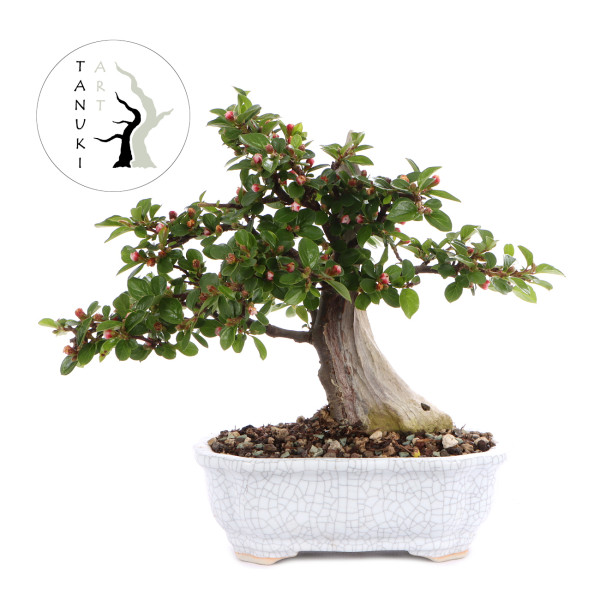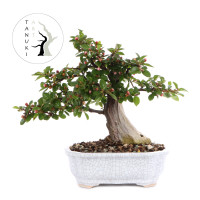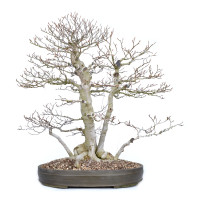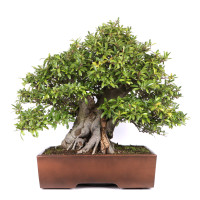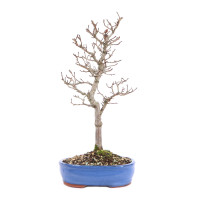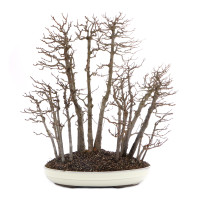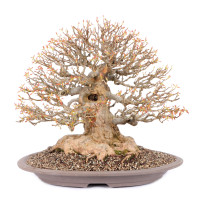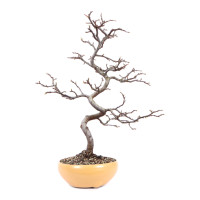- Order number: 1142-KT-24-0923
- Addtion: Tanuki,shohin
- Height: 20 cm (incl. pot)
- Foliage: deciduous
- Bonsai Pot: ceramic pot
- Year: 2020
- Characteristics: attractive autumn colour, with flowers, with fruits
- Origin: Germany
Cotoneaster praecox - Nan-Shan Cotoneaster
General:
The Nan-Shan cotoneaster is common in western China, Sichuan Province, and the Nan-Shan Mountains. It grows there as a low dwarf shrub with a height of no more than a meter, but then often twice as wide. The leaves are small, shiny dark green and turn bright red in autumn. The numerous flowers are pink and appear in May. The Nan Shan Cotoneaster is very robust and tolerates different locations.
Care as a bonsai:
The Nan-Shan cotoneaster, like other dwarf cotoneaster, is very suitable for decorating bonsai. The leaves, flowers and fruits are small and the plants are very easy on pruning. The branches can also be wired and bent without any problems. It is also suitable as underplanting for forests or landscapes (Saikei). The special thing about the Nan-Shan cotoneaster are the deciduous leaves. When the leaves fall in autumn, the branch structure becomes visible and the numerous fruits also come into their own. The Nan Shan cotoneaster actually loves a sunny spot outdoors, although it can also thrive in the shade. The lighter the location, the more pronounced the bloom and fruit formation. The autumn color is then also more intense.
About Tanuki:
A special technique for quickly obtaining expressive and very old-looking bonsai is to "marry" a plant to a dead piece of wood. This usually involves joining long grown plant material to a nicely shaped piece of wood. The plant and the wood are sometimes intricately worked and over time become fused into a single unit. The artistic connection often resembles very old specimens collected in nature (Yamadori) and often looks deceptively real.
Bonsai created by this technique are called "Tanuki" in Japan. The name "Tanuki" also stands for the native "tanuki", which appears in mythology as a mythical creature. In the legends he appears as a cunning quick-change artist, who likes to lead people behind the light, but through these abilities often emerges as the hero of a story.
About the artist:
All "Tanuki Art" - bonsai were designed by the artist Mulyadi. Mr. Mulyadi has been professionally involved in the design of bonsai for many years. In his home country Indonesia he creates extraordinary bonsai out of different plant material. In addition to the implementation of classical forms of design, he has developed his own style and is always looking for creative solutions. The application of the Tanuki technique is his absolute passion and he has developed special methods to achieve unique results in terms of craftsmanship and artistry. "Tanuki Art" - Bonsai are available exclusively in the Bonsaischule Enger.

